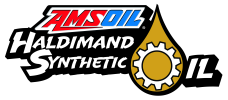Lubricant Viscosity Explained

Every type of fluid possesses differing amounts of resistances against deformation. The measure of that resistance is called viscosity. Viscosity expresses the fluid’s resistance against either tensional stress, or shear stress.
A lubricant’s viscosity and how it changes under different temperatures and operating conditions is one of the most important properties that determines lubricant performance and protection.
Viscosity can be viewed in two ways:
Kinematic viscosity (also called "momentum diffusivity")
Dynamic viscosity (also referred to as absolute viscosity)
How temperature affects viscosity
When cold, lubricants thicken and flow more slowly and require more energy to circulate. That’s why it may be tougher to start your car on a frigid winter morning – the crankshaft has to churn through cold, thick oil before it spins fast enough for the engine to start. Since the oil flows more slowly, engine components may be vulnerable to wear until the oil warms enough to flow throughout the engine.
The opposite happens when the temperature soars. Say you’re towing a camper down the interstate at the height of summer. The intense heat your engine generates causes the oil to become thinner. If it
becomes too thin, it can fail to adequately separate metal components during operation, inviting wear.
The greater a lubricant’s viscosity, the greater pressure or load it can withstand, allowing separation between moving parts to be maintained. But there are limits to this relationship. If the viscosity is too high, it won’t flow as readily and your engine will work harder and burn more fuel.
What causes differences in viscosity?
Let’s think of molecules as a group of people in a room. In one group everyone is holding hands very lightly. It’s flu season and they don’t want to get sick. On the other side of the room, everyone is holding hands fairly tightly. It’s a close-knit group, that one.
If you weave through both groups and break through the chains of
people, you have an easier time weaving through the first group than the second. This is essentially how molecules are bonded in liquids. The looser the molecular bonds, the weaker the inter-molecular forces. This equates to a lower viscosity. The tighter the molecular bonds, the stronger the inter-molecular forces. This equates to a higher viscosity.
How does viscosity affect engine protection?
So what does this all mean to protecting your engine? Put simply, viscosity is the most important property of a lubricant. How lubricant viscosity reacts to changes in temperature, pressure or speed determines how well the oil protects your vehicle.
Using lubricants with inadequate viscosity for the application may lead to these issues:
- Increased metal-to-metal contact
- Increased friction and wear
- Increased oil consumption
- Leaking seals
Using lubricants with too high of a viscosity for the application may lead to the following issues:
- Increased fluid friction
- Increased operating temperatures
- Poor cold-temperature starting
- Reduced energy efficiency
Pressure and its affect on lubrication
Proper viscosity for the intended application is critical to ensure that forces applied to the oil do not result in increased component wear. Applying extreme pressure to oil can lead to mechanical shear, which lowers the film strength and leads to metal-to-metal contact and wear. However, viscosity that is too high can cause oil starvation by not flowing through small oil passages. Optimizing viscosity ensures oil can circulate properly and provide adequate film strength on components.
What effect does speed have on lubrication?
Whether the application is a grease-filled bearing or oil-filled gearbox, one must consider the lubricant’s optimal viscosity based on the application’s running speeds. As speed increases, components may require a lower-viscosity oil to operate efficiently. Furthermore, high viscosity or speed may also increase the lubricant’s film thickness, which increases fluid friction. If the viscosity is too high, fluid friction generates excessive heat that shortens the lubricant’s life.
Different vehicles require different viscosities
The key is to use a lubricant with the correct viscosity for the application. Not only that, but you want to use a lubricant that resists thickening when cold, yet maintains its ability to protect against wear when hot. Synthetic lubricants, such as AMSOIL synthetic lubricants offer better cold-flow when the temperature drops and improved protection once your engine has reached operating temperature.
Vehicle manufacturers specify in the owner’s manual which viscosity of motor oil you should use. You can always use the AMSOIL Product Guide to find that information, too. But keep in mind that your vehicle’s viscosity requirements may change if you’ve modified your engine.





 Canada
Canada United States
United States